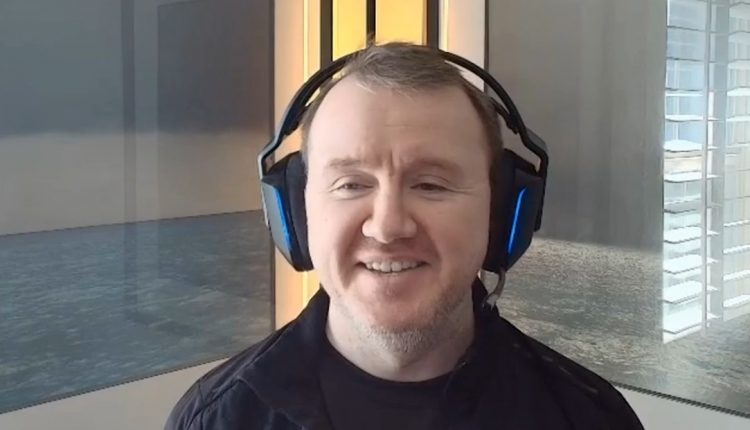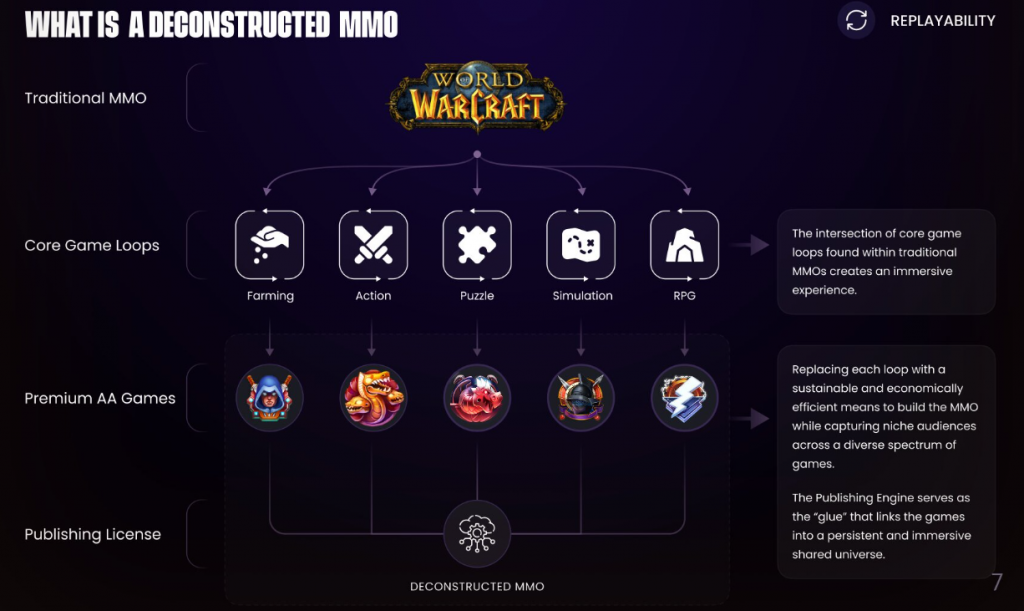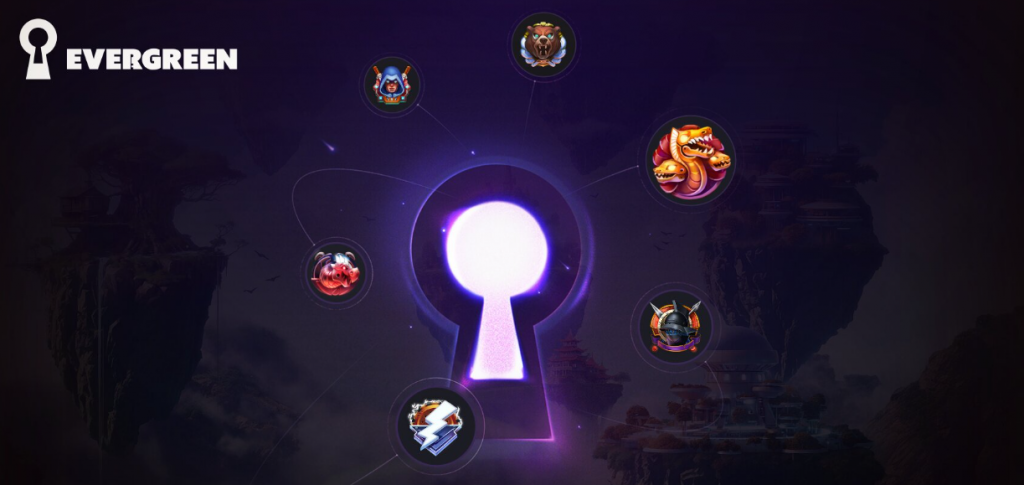How Midnight is building its Evergreen multiverse one game at a time

In the latest episode of his Blockchain Gaming World podcast, editor-in-chief Jon Jordan talks to Steve Wade, the CEO of Midnight.
From a career ranging from gold farming in Ultima Online to building communities for F2P PC games, building payment systems, and working in investment banking, Wade came up with the concept for the Evergreen multiverse in 2021 because “I wanted to think of something that was so ridiculously hard and challenging that no-one would pitch it to investors”.
This interview has been edited for length and clarity.
You can also listen to the podcast via the Fountain app and earn Bitcoin.
BlockchainGamer.biz: Can you tell us a bit about your career so far?
Steve Wade: Anyone who takes a look at my Twitter, I have one message pinned; it’s the August 1997 issue of PC Gamer Magazine, where this game Ultima Online attracted me.
You could live in a fantasy world and fight dragons. I got the game at release, I jumped into it, got pretty good at it. I started joining esports tournaments and making some money. But I eventually realized that while esports is fun, and as much as fun as it was back in the day to log around massive desktops to all these esports tournaments, it was way easier just to set up a bot on my computer to farm gold.
And that’s what I did when I was 15 to 19. I paid for university by farming gold in 26, 27 different MMOs. It was fantastic. I love the idea that people could pay time for money. The whole idea was digital currency, digital real estate. One of the funnest things was that I was selling houses. I would buy a house or build a house in MMO and flip it after I added some fun decorations. I’ve always loved the idea of digital ownership.
Totally against the EULAs of course. How many accounts did you get shut down?
Many, many accounts. The final nail in that coffin was in 2002 when eBay shut us down. It was fine to open accounts on the various MMOs because you would always make your money back. But eBay said, no more gold selling, so we had to go to these grey markets. I did run one. I had the third largest gray market in North America for a time. But it was difficult.I was just starting university and so I thought we have to figure out how do we legitimize ourselves? We had like 75,000 members in our forums, our IRC chat, ICQ chat. We had a large community, what can we do with this community? We ended up signing Guild Wars and World of Warcraft as our first two legitimate clients. We built communities for them and left the gold farming behind us.
I wish I hadn’t because people became billionaires at that and we slugged it out by actually working. But it ended up working well. We did some of the first free-to-play games in the US working with Aeria Games. They acquired my gold farming business because they wanted the community and I guess some of my expertise. But what we realized early on is that a pure marketplace allowing players to trade items with each other isn’t enough to support a company. You still had to have the games make money. Taking 2 to 5% on transactions wasn’t enough.
I pivoted into investment banking for about five and a half years, closed 20 deals, and ended up working with Shrapnel, and I thought I’m going to jump back in. So in December 2021, we started Midnight.
What was the concept for Midnight?
It took me a good two months to come up with the concept, because I wanted to think of something that was so ridiculously hard and challenging that no-one would pitch it to investors. I think what you have in the VC community – and I’m fairly public about this: my investors are great, but for all the other investors who have never invested in Midnight – I think you have this really bad focus group.
If you go to the VC community, they’re gonna cut a lot of bad ideas, but they’re also going to cut a lot of good ideas. What you’ve left with is this middle great mush of gaming ideas. I wanted to take something that was believable to fit into that great mush but also something that no-one else has done. Everything that we’ve started building over the past two years, we’re either the first mover or we’re a category leader. So I feel pretty good that we identified what the problems were and we’re starting to see that now.

At GDC, we saw triple-A games have been dying for a while, free-to-play is difficult, especially on mobile. What is becoming a trend – which we’ve been pushing for the last two years – is small premium titles. Games that cost anywhere from one to say 10 million. Two games came out that have done this quite well. Palworld and Helldivers 2. And that’s the space in which we’ve been building games for the last two years. The goal for us is to get a game out a month. and you can’t do that if you’re doing triple-A.
Releasing one game a month is a lot. How parallel is your development?
We’ll probably do a couple of games every quarter until we can get to one game a month. But it’s happening now with companies like Team17, right? They did 26 games last year. I think Curve Digital did like 16. Yes, they’re publishers, so we’re looking for what I would call first to second party titles for one game a month, and we will do third party publishing too. The first and second party games, they’re like experiences. They’re more integrated into the overall story and then the third party games will be rides. They’re still part of the story but they’re not as in depth.
One thing that’s unique to Midnight is every game is their own walled garden. Every game should be able to stand on its own, every game should be profitable on its own. Most premium games have a three-to-six month lifespan. We believe our model is going to increase that to nine-to-12 months, but games die every once in a while. An evergreen will last two, three, 10 years. We’re not going to run away from those. We’ll chase success but we came into this fully knowing that games will die. Games are a hard business. To get eyeballs for a game, discoverability is still a massive, massive issue that not very many people have figured out to solve. We like a challenge.
So some games will be tightly coupled. Some more diverse. What holds everything together?
I use the term multiverse just because I like the way the Midnight multiverse sounds. I don’t like metaverses, but I like multiverses.
We want to figure out, how can we lean into web3? How can we bring utility items? How can we create a marketplace between games? My background in selling items and having the trading platform, the amount of users trading is fairly small, right? You have a subset of a subset of users that actually want to trade. I think that subset can be increased if it’s at the forefront and it’s not in a grey market. I don’t think it’s enough to support a game studio. You still have to have a business. You still have to have a game business.
What we like about doing multiple games is players are willing to spend in their primary game. Once a user has a game they like, they’re gonna stay. You probably don’t want to move them out. But say they want a black t-shirt and the only way to get that black t-shirt is by playing a fishing game. They don’t like fishing games but the people who do like fishing games can sell black t-shirts to those who want them. That’s what we’re thinking. How do we make a circular ecosystem for games?

We have a fairly neat system we call our interoperable item keys. That’s why the Evergreen logo is a keyhole. Keys for us are very much like GameSharks of the past. They are game mods, right? We love what Overwolf does with game mods. They’re an investor. We love the idea that you can change things. This is one of the things we think is going to let our games go past those three-to-six months. Users can come and bring their mods and change the game.
At the base level, what we call semantic interoperability, is just a simple tag system where a game developer could come in and say This item is blue, so it’ll have a blue tag on it. Maybe it makes things fast, it’ll have a fast tag on it. Then other game developers can see that list of our first 42 tags and they’re like, I like strength or I like speed or I like the color blue, so let’s bring that in. Maybe it unlocks quests. Maybe it’s cosmetics. IP holders seem to like this because you can’t license Shrek to every single game but if you go to the IP holder, and say I want Shrek, but he’s only going to be in two games. Here’s a Shrek item. If someone destroys it, because we have the crafting system, then they get all the parts that make up Shrek. Green, strength, smells bad. Take your pick. But then that item can move around the games. The dev teams seem to like it because it’s a fairly light lift. We’re not asking them to change their game. We’re asking them to look inside of our drop-down menu. Those are the rides. I think the experiences are a little more in depth.
We have a mobile companion app that links everything together. So there is an overall story that moves forward, but the story is secondary to the first game. We’re saying 75% of users are going to play a game, just that game. They’re not going to care about the secondary market of item sales or the secondary story that is Evergreen.
They’re like I like 2D pixel brawlers, or I like fishing games, or I like Barbie dress-up games. They’re going to come, they’re going to play that game. We’re making niche games for niche users but eventually 30-some percent will have to intermingle. And that’s always been the fun in MMOs for me, you get people interacting with each other that normally wouldn’t.
So you’re going to have a lot of niche games but is there enough to draw these players into the central hub?
Water always finds the path of least resistance. As we build games, we’re going to figure out what that is and how to support users the best way we can. But when we looked at this, we looked at these different web3 companies building metaverses that essentially were empty shopping malls. I think it’s very difficult to build an MMO. It’s three plus years and a hundred million dollars. Whereas a double-A game is less than a year, sometimes a couple of hundred grand, maybe a couple of years and five million for the big ones. On the flip side, a successful MMO can return an entire fund’s investment. So we’re looking for the upside of an MMO without the downside of the development cost.
That’s how we came to our idea of a deconstructed MMO. There’s only a finite amount of users for any MMO. It’s actually difficult to find new users. But we have these niche games with niche users who actually widen the funnel. We say that with Midnight, there’s something for everybody. Our goal isn’t to get everyone to play every game. Ideally, we have 12 games a year. A user might like two, three, maybe four of those games max.

We don’t expect them to play all of the games. But it does help us get down to that lower funnel. The cost for user acquisition is much lower too. Niche games for niche users, but you’ll get a bunch of them. Maybe one game only has a TAM of a hundred million dollars, but then you get 10 of those, then you have a billion dollar product with 10 games. That’s the idea. But we don’t want to push web3. It should never feel forced, only that we’re offering benefits.
How many games are you developing now?
We have four games in development and we’re looking at buying others. Traditional web 2 is in trouble. A lot of studios are shutting down. I was an M&A investment banker, in special circumstances, so I wasn’t coming into companies when everything was great, so that’s what I’m looking at. We’ve got two offers out now for five to six additional games so we can have a strong portfolio. We’re looking at publishing deals, we’re looking at studio acquisitions, we’re happy to look at team acquisitions. I’ve got to assume there’s teams coming out of Riot or Bungie or some other studio that can knock something out, especially with AI and these tools. We look at a new AI tool every day. I’m just amazed by the speed. It’s going to make some massive changes in the next couple of years.
How is blockchain fundamental to what you’re doing?
I think what we’re doing is more interesting for blockchains because we’re working with a bunch of different studios so we have to have a shared database to get everyone talking. For something like Roblox or Fortnite, you don’t need a blockchain. They’re their own walled ecosystems, but we’re linking multiple games, multiple developers, hopefully across chains at some point. We’re not trying to find a problem to solve. There is a problem which blockchain solves. Let’s use it.
To me, it sounds like you’ve come up with a business model but how can you be sure any of the games are going to attract an audience?
I think that’s a compliment because the way that we looked at this was every month there’s a new web3 game being announced but I sat down and thought where’s blockchain going to be in the next five years. Let’s build a business model from what we know has been around for five years already. If we have sustainable revenue. Cash is king. As long as we have a revenue source, we can do things and we want to be very excited about what we’re doing. We’re making real games that people can have fun with. And from that approach we can do fun things with web3, where web3 is not our business model, where it’s not required to keep the studio’s lights on.
And in that model, we hope to find the next Shrapnel or the next big game, because hits still make moves in the game industry. I don’t think anyone could deny that. So maybe one game in 30 has a chance of being a hit. One in a hundred will be a blockbuster. We’re very conservative in our model.
Where are you now in terms of roadmap?
We’re going to announce our chain partner in the next two weeks. Ideally, it’s a cross -chain community, so even if we just pick one chain, we can still do things with other chains. Our mobile companion app is live on iOS and Android. People can start farming for NFTs in our airdrops. We’re looking at June for our TGE. We’re lining up with exchanges. Exchanges are incredibly busy. There’s something like 60 game tokens coming out this summer.
For me, tokens are just another asset class. Just another way for me to make more games. Whether it’s a token or maybe I’ll do a SPAC, whatever cash gets through the door, I can make games.
And we’re looking at October right now to release the first couple of games.
Find out about what Midnight is building via its website and check out the Evergreen whitepaper here.

Comments are closed.